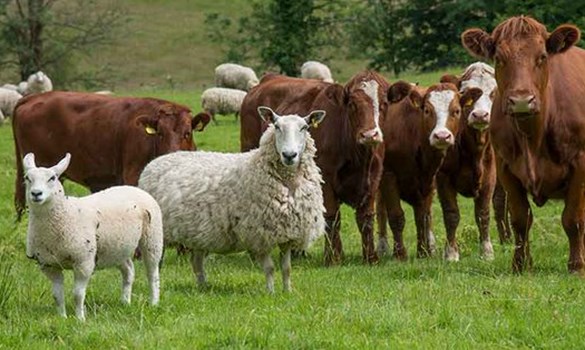Why is animal genetics important?
Livestock populations provide people with a variety of products and services, including meat, milk, eggs, fibre and draught power, in a wide range of environments. This diversity of function is only possible because of the diversity of their genetic make-up.
The genetic variation within livestock populations also provides the raw material both for evolution through natural selection in response to changing conditions and for human-managed genetic improvement programmes. It is vital both to efforts to increase production and to the adaption of livestock populations to challenges such as climate change, emerging diseases and pressures on feed and water resources.
Animal genetics is one of the pillars of livestock development (alongside animal health, animal nutrition and husbandry issues such as housing). It is a broad field, ranging from characterization to conservation to genetic improvement, and involves actions at local, national, regional and global scales.
Characterization is the assessment of livestock populations and their production environments to establish their current status and identify strengths that can be enhanced and weaknesses that need to be overcome, for example via a genetic improvement programme. It can also help to inform conservation strategies.
Conservation of animal genetic resources refers to measures taken to prevent the loss of genetic diversity in livestock populations, including to protect breeds from extinction. It can involve both the conservation of live populations and the cryoconservation (preservation through freezing at extremely low temperatures) of material such as semen or embryos.
Genetic improvement (animal breeding) is based on the principle that the products (milk, meat, wool, etc.) and services (e.g. transport, draught power or cultural services) provided by animals are a function of their genes and the environmental influences that they are exposed to. Improvement can be achieved by selecting genetically superior animals to be the parents of the next generation. “Genetically superior” means superior in terms of a particular set of characteristics, which usually include productivity in the environmental conditions expected in the future, but should also consider traits such as fertility, disease resistance or longevity that relate to costs of production.
Since the middle of the twentieth century, genetic improvement efforts have concentrated on a very small number of breeds worldwide, frequently without due consideration to the way in which local production environments affect animals’ ability to survive, produce and reproduce.
Summary from FAO
Please contribute relevant initiatives and resources for livestock genetics and request 'join page' if you are an expert in this topic area.


